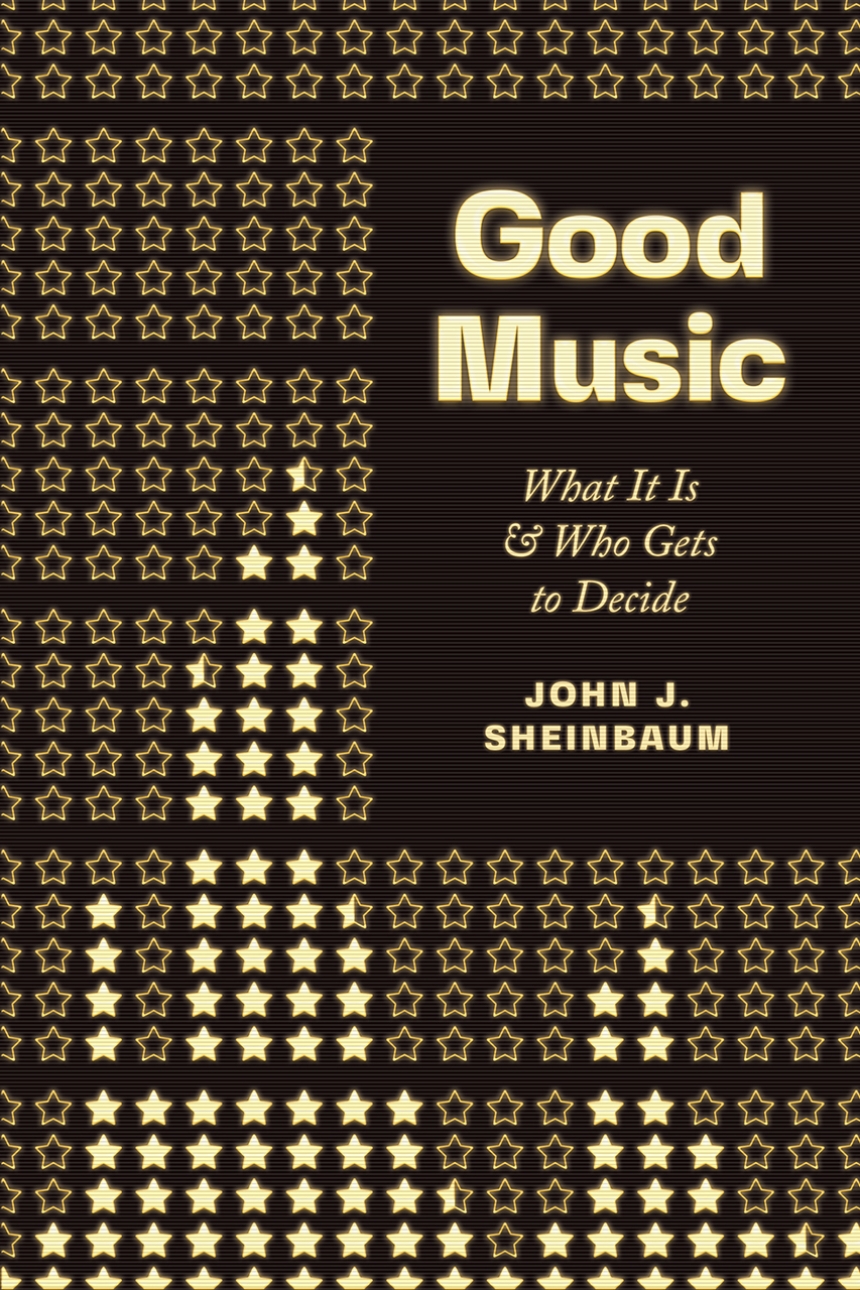Good Music
What It Is and Who Gets to Decide
Over the past two centuries Western culture has largely valorized a particular kind of “good” music—highly serious, wondrously deep, stylistically authentic, heroically created, and strikingly original—and, at the same time, has marginalized music that does not live up to those ideals.
In Good Music, John J. Sheinbaum explores these traditional models for valuing music. By engaging examples such as Handel oratorios, Beethoven and Mahler symphonies, jazz improvisations, Bruce Springsteen, and prog rock, he argues that metaphors of perfection do justice to neither the perceived strengths nor the assumed weaknesses of the music in question. Instead, he proposes an alternative model of appreciation where abstract notions of virtue need not dictate our understanding. Good music can, with pride, be playful rather than serious, diverse rather than unified, engaging to both body and mind, in dialogue with manifold styles and genres, and collaborative to the core. We can widen the scope of what music we value and reconsider the conventional rituals surrounding it, while retaining the joys of making music, listening closely, and caring passionately.
In Good Music, John J. Sheinbaum explores these traditional models for valuing music. By engaging examples such as Handel oratorios, Beethoven and Mahler symphonies, jazz improvisations, Bruce Springsteen, and prog rock, he argues that metaphors of perfection do justice to neither the perceived strengths nor the assumed weaknesses of the music in question. Instead, he proposes an alternative model of appreciation where abstract notions of virtue need not dictate our understanding. Good music can, with pride, be playful rather than serious, diverse rather than unified, engaging to both body and mind, in dialogue with manifold styles and genres, and collaborative to the core. We can widen the scope of what music we value and reconsider the conventional rituals surrounding it, while retaining the joys of making music, listening closely, and caring passionately.
320 pages | 2 halftones, 25 musical examples, 8 tables | 6 x 9 | © 2018
History: History of Ideas
Music: General Music
Philosophy: Aesthetics
Reviews
Table of Contents
List of Illustrations
Acknowledgments
Introduction—Good: What Values Do We Bring to Music?
1. Serious: The Cultural Work of Classical Music and the Trap of Musical Sound
2. Unified: Beethoven, the Beatles, and the Imperfect Ideology of the Masterpiece
3. Deep: Classical Values and Musical Color in Mahler’s Symphonies
4. Authentic: Progressive Rock and the Inversion of Musical Values
5. Heroic: “Classic” Jazz and Musical Dialogues
6. Original: Handel Historiography and the Horizontal Remix
7. Connected: What’s at Stake in How We Love the Music We Love?
Notes
Works Cited
Index
Acknowledgments
Introduction—Good: What Values Do We Bring to Music?
1. Serious: The Cultural Work of Classical Music and the Trap of Musical Sound
2. Unified: Beethoven, the Beatles, and the Imperfect Ideology of the Masterpiece
3. Deep: Classical Values and Musical Color in Mahler’s Symphonies
4. Authentic: Progressive Rock and the Inversion of Musical Values
5. Heroic: “Classic” Jazz and Musical Dialogues
6. Original: Handel Historiography and the Horizontal Remix
7. Connected: What’s at Stake in How We Love the Music We Love?
Notes
Works Cited
Index
